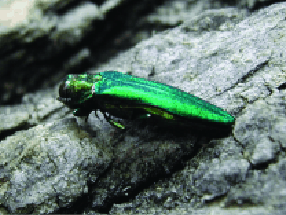Gypsy Moth Numbers Increasing
The number of gypsy moths in northern Minnesota continues to rise, despite successful efforts to eradicate established populations of the exotic insect.
The Minnesota Department of Agriculture reported recently that it trapped 28,000 gypsy moths in the state in 2009, more than double the 2008 count.


